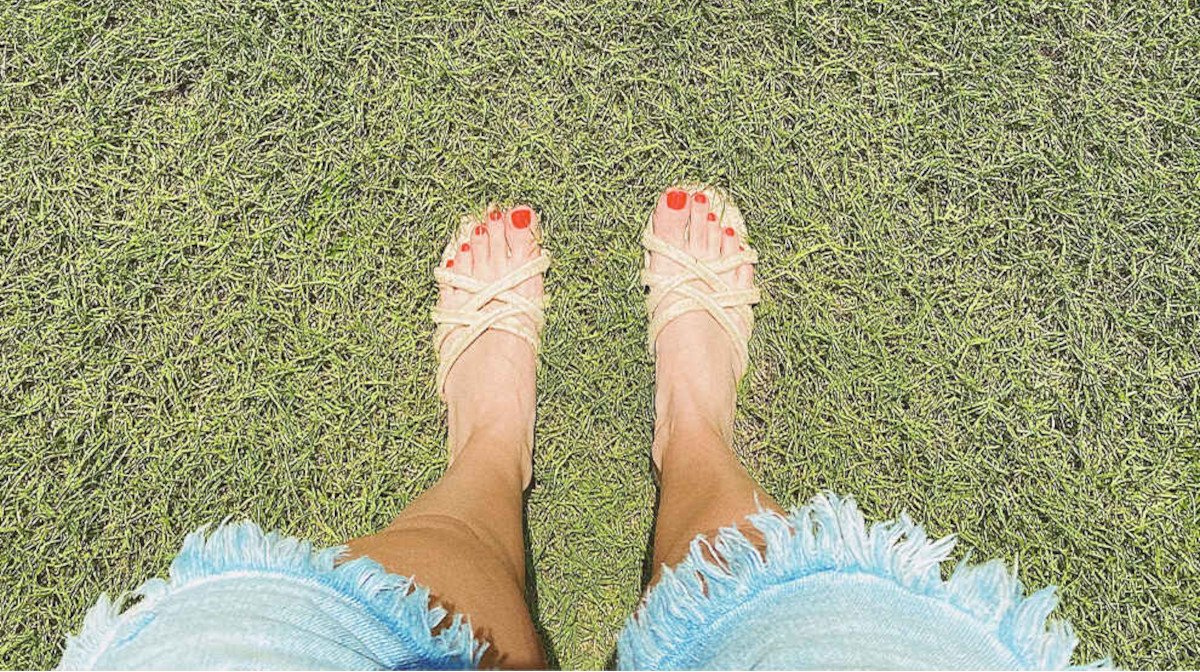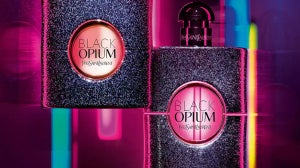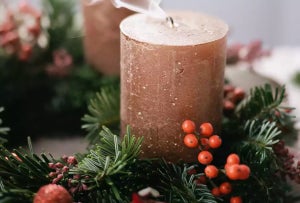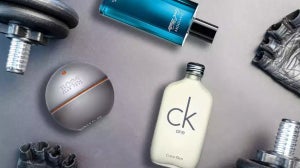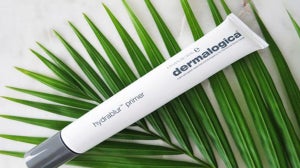Why do we get dry skin on our feet?
Our feet are more prone to dryness than other parts of our body because there aren’t as many oil glands there, so the skin isn’t great at keeping itself soft. Throw in daily stresses from walking, running, or whatever else you do on foot, and you’re looking at some unavoidable dryness and rough areas.
- No natural moisture from oil glands or hair follicles
- Pressure from standing or exercising
- Exposure to too-hot water in the shower or bath
- Sun damage
- Artificial heating in the colder months
- Skin conditions like eczema and psoriasis
Let’s take a look at these common causes of dry feet in a little more detail, so you can prevent the problem before it arises.
1. No natural moisture from oil
The soles of our feet are up against it even more than our toes, bridges, and ankles. That’s because the skin here is naturally thicker and has more sweat glands but no hair follicles or ability to produce oil.
2. Pressure from standing and walking
Many of us rely on our feet to get us from A to B. Regular standing and walking is enough to put some pressure on our feet. Throw in running, yoga, competitive sports, and anything else you might be into, and you’re giving your feet a lot to contend with!
Regular movement can cause dry, hard skin to form on pressure points like our heels, big and little toes, and the balls of our feet. These are the areas you’ll want to focus on with your new footcare regime.
3. Too much hot water
You might already know that too-hot showers and baths can dry out your skin. While they might feel great in the short term, steamy soaks suck moisture away, leaving your body feeling dry and dehydrated. Feet too!
If you can bear to be parted with your hot bubble bath or shower, it’s better to wash in lukewarm water. Suppose you’re particularly concerned about dry skin on your body, including your feet. In that case, keeping your water temp in mind could be a game-changer.
4. Sun damage
We’ve all done it. Even the most sun-conscious among us sometimes forget to apply SPF to the skin on our bridges and toes. The skin here is naturally delicate, which means long periods in the sun without the proper protection can cause dryness and premature ageing.
5. Indoor heating
Just like heated rooms can dry out your face and body, they can dry out the skin on your feet, too. If you notice your feet are dehydrated and cracked in winter, it could be a good idea to turn down the thermostat or wear socks at home. Heating systems reduce the moisture in the air, so avoid exposing your toes to these conditions if you’re struggling with dryness.
6. Skin conditions
Another common cause of dry skin on the feet, skin conditions like eczema, can be persistent in sufferers. Still, once you understand these conditions, they can be straightforward to treat with the proper creams.
How to take care of the skin on your feet
You wouldn’t ignore dry, cracked skin on your hands or face. So why let it slide when it develops on your feet? Get ready for sandal season with a regular foot care routine and enjoy feeling proud of every inch.
Cleansing is essential
When you take a bath or shower, you might assume your feet get clean by themselves. Fresh water and lather run over them while you look after the rest of your body, right? Wrong! Well, sort of.
Sweat and dirt can get trapped in dry skin on your feet, which means bacteria and bad smells are more likely to linger. These can turn into conditions like a fungal infection or athlete’s foot. They’re pretty standard and can be treated with over-the-counter or prescription medication. Still, we know you’d prefer to avoid them.
To keep your tootsies healthy and hygienic, be sure to clean them every day, just like any other part of your body. You might like to use a nourishing soap or body wash, getting between your toes and everywhere else with the lather.
Exfoliate every week
Add a weekly foot exfoliation to your self-care regime and get one step closer to the baby-softness of your dreams. You can exfoliate your feet using a pumice stone or foot file; it should take around five minutes if you stay on top of things, so it’s no biggie to add this step to your post-shower routine.
Rub whatever tool you’ve chosen over your feet in small circles, focusing on dry areas (usually your heels, toes, and the balls of your feet). You could do this to wet or dry feet, but scrubbing after a wash means any dry skin will have softened and should come away quickly.
Choose cotton socks
Cotton is a natural, breathable material that will be kind to your feet and help keep them soft. If your sock drawer is bursting with synthetics, consider switching them out for cotton alternatives to take better care of the skin on your feet.
Use a foot mask to get rid of dry skin
If you’re struggling with dry, cracked feet or want them looking their best for summer, adding a foot mask to your routine can be a game-changer. There are two types of foot mask you might want to try: deeply moisturising foot masks and those which promote skin peeling.
What does a foot mask do?
You might want to use a foot mask if your skin is severely dry or calloused, or just to take care of your already-soft feet! There’s no reason you shouldn’t try this indulgent beauty treatment – foot masks are suitable for everyone.
Hydrating foot masks
Some foot masks are just like those you might use on your face. Made from nourishing ingredients that can help to exfoliate, moisturise, and improve skin’s condition after a few minutes of wearing. You’ll slather the product on, sit for 10 to 20 minutes while it does its thing, then rinse it away to reveal rejuvenated feet.
Peeling foot masks
Other, more potent foot masks contain active ingredients which promote cell turnover. So you’ll wear the product for a period, rinse it away, then watch your skin peel off dramatically over the next day or so.
These foot masks usually come as a kit, including little socks that have been soaked in the formula – think sheet masks for your feet. To enjoy the full benefits of a peeling foot mask, you might need to wear your stylish new socks for an hour or so, so it’s also a great excuse to put your feet up and catch up on your shows!
How do peeling foot masks work?
Peeling foot masks work by using skin-safe acids to dissolve the bonds between live and dead skin cells. So you’ll shed those dry cells like a snake and be left with only the baby-soft skin underneath.
Who shouldn’t use peeling foot masks?
Peeling foot masks are generally safe to use, and they’ll provide excellent results for most people. However, if you have diabetes or you’re pregnant, you should speak to your doctor first. Similarly, avoid using masks if you have any cuts, bites, or rashes on your feet.
The best foot masks to try for yourself
There’s lots of foot care out there, which can make choosing the right products for you a challenge. Good news! Many of our favourite skincare brands make foot masks and peels, so you can buy with confidence and enjoy the same great results you’ve grown used to. But there are also many foot care-specific brands, who make lotions, masks, and scrubs that you might not have come across before.
The BARBER PRO and BeautyPro foot peels are two award-winning masks that remove hard skin and callouses with next-to-no effort. With salicylic acid and botanical extracts, these easy-to-use foot booties should be worn for a maximum of 90 minutes. Your skin will peel away over the next week, so don’t try this the day before your big flip-flop debut!
Explore our foot care collection for more moisturisers, exfoliators, and colourful nail varnishes to complete your summer preparations!
